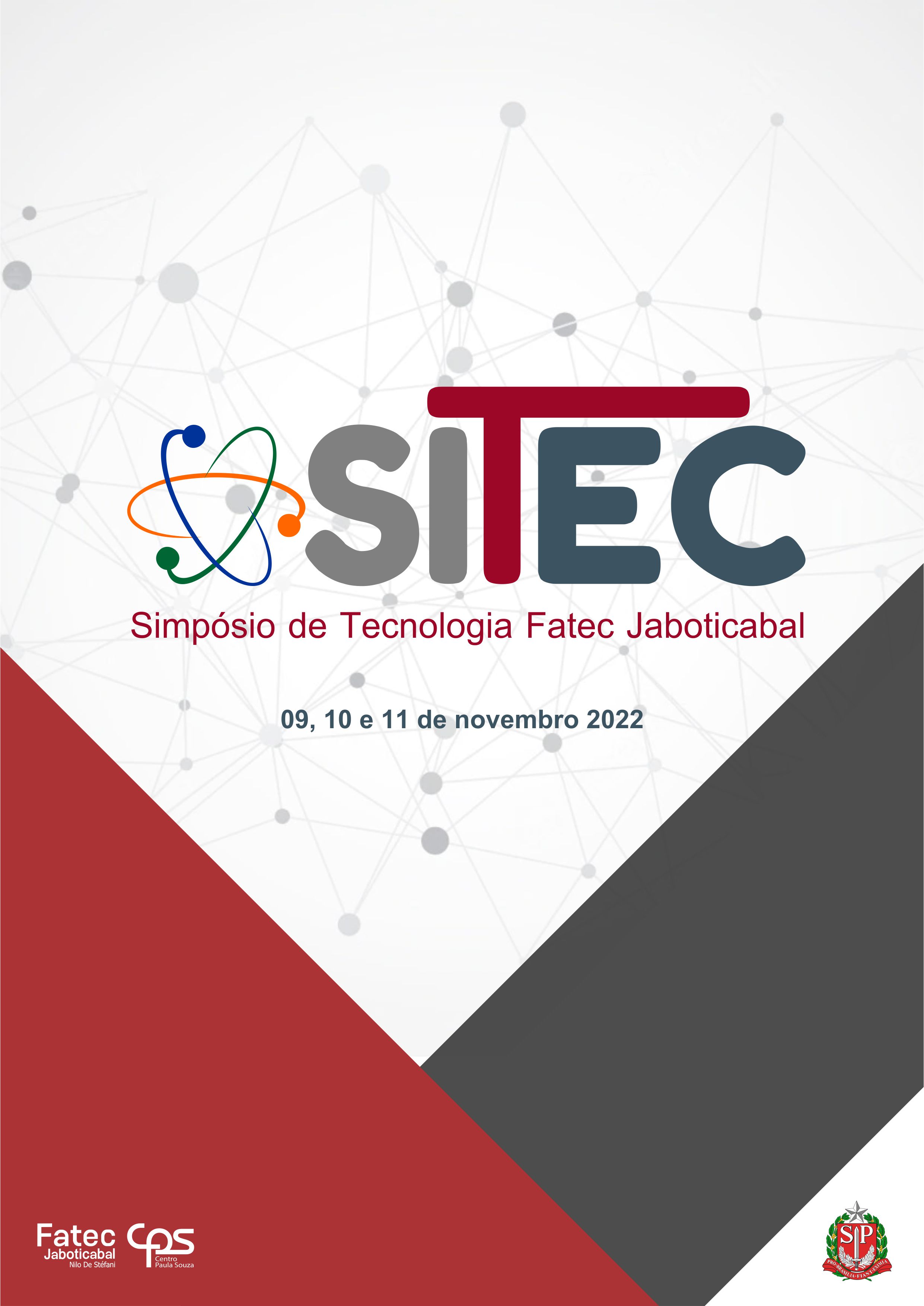ANTIMICROBIAL RESISTANT BACTERIA IN PIGS: environmental and unique health problems
environmental and unique health problem
DOI:
https://doi.org/10.52138/sitec.v12i1.223Keywords:
Emerging pollutants, Swine., Antibiotics., Environment., Environmental contamination.Abstract
The genes of resistant bacteria are considered emerging contaminants. The intensive use of antimicrobials in the production of confined swine leads to great selection pressure and resistance gene transfers. The excretion of these drugs in the waste of these animals can exceed 60%. Therefore, it is evident that swine farming has a high polluting potential, and the destination and treatment of production waste deserve attention. The negative effects of the dissemination of antimicrobial resistance genes directly affect the soil microbiota, when these wastes are released without treatment. And yet, it can be considered a risk to public health, causing problems related to bacterial resistance to antibiotics for human use. This work is a bibliographic review, which aims to demonstrate the main environmental and unique health problems of antimicrobial-resistant bacteria from intensive swine production. In this sense, the importance of treating swine manure is notorious, aiming at the removal of these resistance genes, however, there are still few studies that show efficiency in the removal of these contaminants by conventional treatment methods.
References
AZIZ, A. et al. Anaerobic digestion in the elimination of antibiotics and antibiotic-resistant genes from the environment – A comprehensive review. Journal of Environmental Chemical Engineering, 1 fev. 2022. Disponível em: https://www.sciencedirect.com/science/article/pii/S2213343721014007. Acesso em: 4 jun. 2022.
BAKER-AUSTIN, C. et al. Co-selection of antibiotic and metal resistance. Trends in Microbiology, v. 14, abr. 2006. Disponível em: https://doi.org/10.1016/j.tim.2006.02.006. Acesso em: 10 jul. 2022.
CHENG, D. L. et al. Problematic effects of antibiotics on anaerobic treatment of swine wastewater. Bioresource Technology, v. 263, 1 set. 2018. Disponível em: https://www.sciencedirect.com/science/article/pii/S096085241830659X. Acesso em: 7 jun. 2022.
CHENG, D. et al. A critical review on antibiotics and hormones in swine wastewater: Water pollution problems and control approaches. Journal of Hazardous Materials, v. 387, abr. 2020. Disponível em: https://www.sciencedirect.com/science/article/pii/S030438941931636X. Acesso em: 3 jul. 2022.
FANG, J. et al. Antimicrobial resistance profiles and characteristics of integrons in Escherichia coli strains isolated from a large-scale centralized swine slaughterhouse and its downstream markets in Zhejiang, China. Food Control, v. 95, jan. 2019. Disponível em: https://www.sciencedirect.com/science/article/pii/S0956713518303992. Acesso em: 2 jun. 2022.
FRIEDMAN, N. D.; TEMKIN, E.; CARMELI, Y. The negative impact of antibiotic resistance. Clinical Microbiology and Infection, v. 22, 1 maio 2016. Disponível em: https://www.sciencedirect.com/science/article/pii/S1198743X15010289. Acesso em: 19 jul. 2022.
LAN, L. et al. High removal efficiency of antibiotic resistance genes in swine wastewater via nanofiltration and reverse osmosis processes. Journal of Environmental Management, v. 231, p. 439–445, 1 fev. 2019. Disponível em: https://www.sciencedirect.com/science/article/pii/S0301479718312076. Acesso em: 10 jun. 2022.
LI, N. et al. The persistence of antimicrobial resistance and related environmental factors in abandoned and working swine feedlots. Environmental Pollution, v. 255, dez. 2019. Disponível em: https://www.sciencedirect.com/science/article/pii/S0269749119323942. Acesso em: 22 set. 2022.
LI, X. et al. Metagenomic evidence for co-occurrence of antibiotic, biocide and metal resistance genes in pigs. Environment International, v. 158, 1 jan. 2022. Disponível em: https://www.sciencedirect.com/science/article/pii/S0160412021005249. Acesso em: 3 jul. 2022.
MA, Z. et al. Long-term low dissolved oxygen accelerates the removal of antibiotics and antibiotic resistance genes in swine wastewater treatment. Chemical Engineering Journal, v. 334, p. 630–637, 15 fev. 2018. Disponível em: https://www.sciencedirect.com/science/article/pii/S1385894717317576. Acesso em: 10 jun. 2022.
MENZ, J.; OLSSON, O.; KÜMMERER, K. Antibiotic residues in livestock manure: Does the EU risk assessment sufficiently protect against microbial toxicity and selection of resistant bacteria in the environment? Journal of Hazardous Materials, v. 379, 5 nov. 2019. Disponível em: https://pubmed.ncbi.nlm.nih.gov/31279308/. Acesso em: 5 jun. 2022.
MICHELON, W. et al. Microalgae produced during phycoremediation of swine wastewater contains effective bacteriostatic compounds against antibiotic-resistant bacteria. Chemosphere, v. 283, 1 nov. 2021. Disponível em: https://www.sciencedirect.com/science/article/pii/S0045653521017409. Acesso em: 10 jul. 2022.
PISSETTI, C. et al. Antimicrobial resistance in commensal Escherichia coli and Enterococcus spp. isolated from pigs subjected to different antimicrobial administration protocols. Research in Veterinary Science, v. 137, p. 174–185, 1 jul. 2021. Disponível em: https://www.sciencedirect.com/science/article/pii/S0034528821001417. Acesso em: 5 jun. 2022.
SARMAH, A. K.; MEYER, M. T.; BOXALL, A. B. A. A global perspective on the use, sales, exposure pathways, occurrence, fate and effects of veterinary antibiotics (VAs) in the environment. Chemosphere, v. 65, out. 2006. Disponível em: https://www.sciencedirect.com/science/article/pii/S0045653506003213. Acesso em: 10 jul. 2022.
WATANABE, N. et al. Use and environmental occurrence of antibiotics in freestall dairy farms with manured forage fields. Environmental Science and Technology, v. 44, n. 17, p. 6591–6600, 1 set. 2010. Disponível em: https://pubs.acs.org/doi/10.1021/es100834s. Acesso em: 4 jul. 2022.
ZAHEDI, S. et al. Anaerobic treatment of swine manure under mesophilic and thermophilic temperatures: Fate of veterinary drugs and resistance genes. Science of the Total Environment, v. 818, 20 abr. 2022. Disponível em: https://pubmed.ncbi.nlm.nih.gov/34793799/. Acesso em: 5 jul. 2022.
ZAREI-BAYGI, A.; SMITH, A. L. Intracellular versus extracellular antibiotic resistance genes in the environment: Prevalence, horizontal transfer, and mitigation strategies. Bioresource Technolog, 1 jan. 2021. Disponível em: https://pubmed.ncbi.nlm.nih.gov/33254446/. Acesso em: 19 jul. 2022.
Downloads
Published
How to Cite
Issue
Section
License
Copyright (c) 2023 Ciência & Tecnologia

This work is licensed under a Creative Commons Attribution 4.0 International License.


